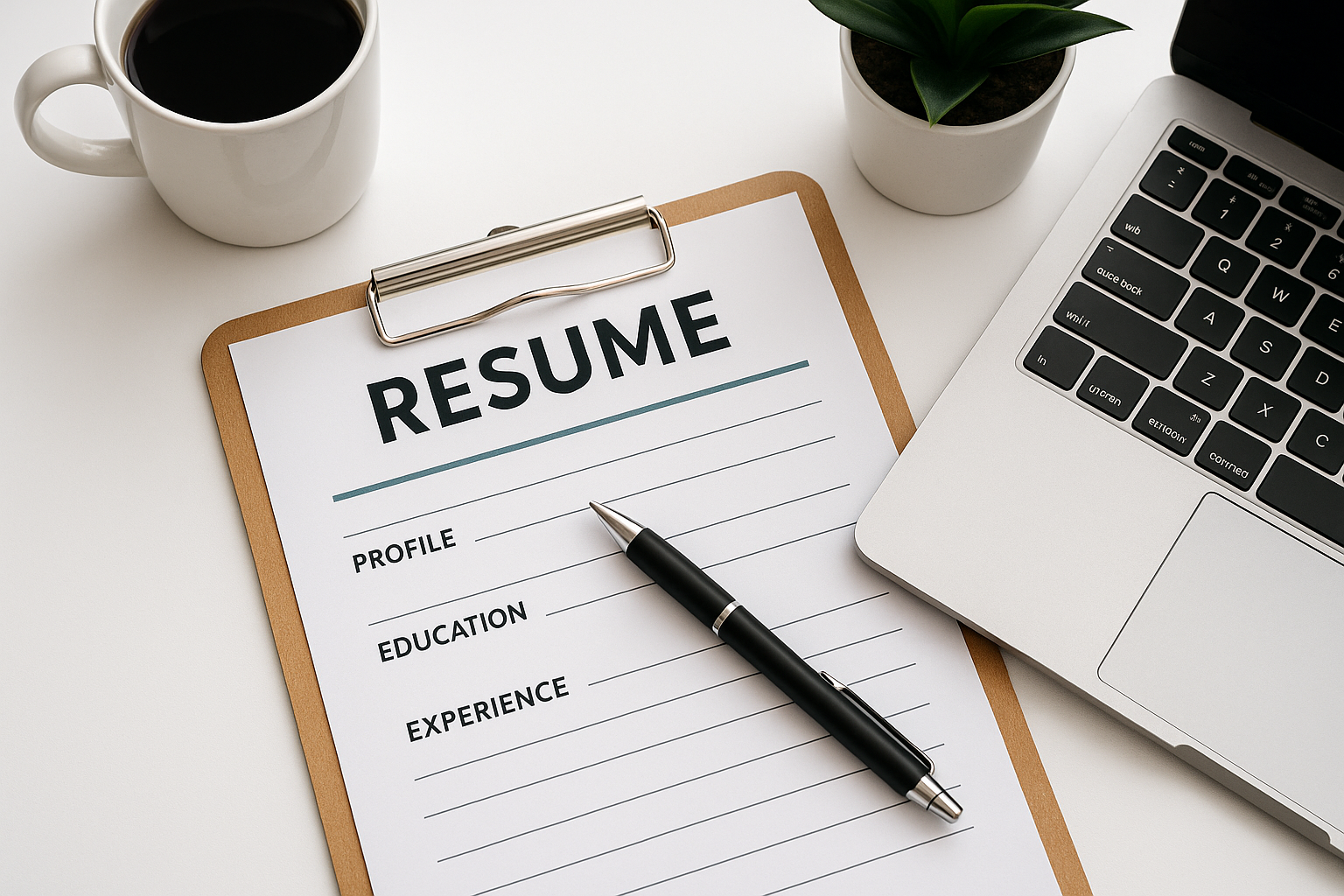Write a Resume That Wins Interviews

Your resume is your first impression — it acts as a compact pitch to a hiring manager who usually has limited time. A well-crafted resume gets you through the gate and into that crucial conversation. In this guide we’ll walk through a practical, repeatable approach to building a resume that wins interviews, including structure, language, examples, and quick edits you can make today.
Why a strong resume still matters
Even in an era of LinkedIn profiles and recruiter networks, the resume remains the most common tool recruiters use to decide who to interview. It’s compact, scannable, and portable — and that makes it influential. A strong resume:
- Helps you pass Applicant Tracking Systems (ATS) when formatted properly.
- Shows measurable impact rather than responsibilities.
- Makes it obvious what role you’re targeting.
Common resume mistakes to avoid
- Vague language: “Responsible for” tells nothing — prefer concrete outcomes.
- One-size-fits-all resumes: The best resumes are targeted to the job description.
- No metrics: Numbers turn claims into evidence.
- Over-designed layouts: Fancy formatting can break ATS parsing; keep it simple.
Step-by-step: a simple resume structure that works
Header
Your name should be the visual anchor. Include a clean email address, phone number, and a link to your LinkedIn. City and country (or region) are usually enough; full postal addresses are optional.
Professional Summary (Optional but useful)
3–5 lines that answer: who you are, your top outcomes, and what you’re looking for. Keep it tailored to the role. Example:
Product manager with 6 years of experience building consumer mobile apps. Led cross-functional teams to grow user retention 22% through roadmap prioritization and feature experiments.
Core Skills
Short, scannable list of the most relevant skills. Use terms from the job listing — that helps ATS and humans.
Experience (Achievements, not tasks)
List roles in reverse chronological order. For each role include 3–6 bullet points focusing on achievements. Use the formula: action verb + what you did + measurable outcome. Example:
Senior Marketing Analyst, BrightCo (2021–Present)
- Built attribution model that increased campaign ROI by 28%.
- Automated weekly reporting, reducing team analysis time by 10 hours.
Education & Certifications
Keep this concise — degree, institution, year. Add certifications that are relevant to the role.
Optional: Projects / Volunteer
For career-changers or technical roles, short project summaries with outcomes help showcase capability.
Optimization: quick edits that make a big difference
- Target the job posting: Update your summary and top 3 bullets to reflect the job’s top requirements.
- Quantify everything: Percentages, time-saved, revenue, headcount — numbers matter.
- Use active verbs: Led, improved, launched, reduced, scaled.
- Clean up formatting: One font, consistent bullet style, margin spacing.
Example: before & after
Before
Software Engineer – did backend work, worked on API and helped team.
After
Software Engineer – Optimized core API endpoints, improving response times by 40% and reducing server costs by 18%.
The “after” version is specific, measurable, and recruiter-friendly.
Frequently asked questions
How long should a resume be?
For most early- to mid-career professionals, one page is ideal. Senior candidates or those with long relevant histories can use two pages. Always prioritize relevance.
Should I use a template?
Templates are fine as long as they’re simple and ATS-friendly. Remove decorative elements that could break parsing.
How often to update?
Update your resume after major wins or at least every six months — even if you’re not job hunting. It’s easier to record achievements while they’re fresh.
